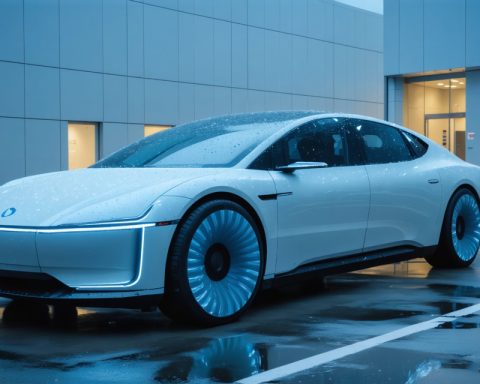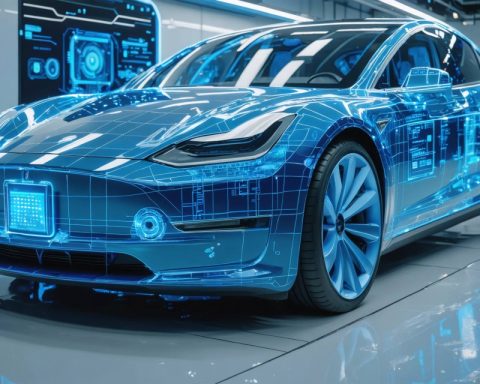- Electric vehicles (EVs) are transforming transportation worldwide, particularly in developing nations, reducing air pollution and combating climate change.
- UN Environment Programme’s Rob de Jong leads efforts to promote EVs in over 60 emerging economies, aiming for price parity with traditional vehicles by 2025.
- China is a leader in EV affordability, with some models priced around $15,000 including subsidies.
- There is a projected increase in vehicle numbers, with a billion new vehicles expected globally by 2050, highlighting the shift from fossil fuels is crucial.
- EVs offer numerous benefits: reduce air pollution, lower fossil fuel reliance, and boost renewable energy sectors and green job opportunities.
- Electric motorcycles are popularizing in Africa and Southeast Asia, akin to past tech adoptions like mobile phones.
- Challenges include expanding market share, standardizing technology, and improving charging infrastructure, particularly through methods like battery-swapping.
- Despite challenges, the move towards electric transportation is an irreversible and accelerating trend.
Zooming down highways in Beijing, you’d be hard-pressed to spot vehicles belching smoke. Instead, a silent fleet of electric cars glides across the cityscape, marking a new era of mobility. Thousands of miles away, the streets of Kigali hum with the gentle whirr of battery-operated motorcycle taxis, a testament to the electrifying transformation sweeping the globe.
Across developing nations, a silent revolution is gaining momentum. Rob de Jong, the visionary head of the United Nations Environment Programme’s Sustainable Mobility Unit, stands at its forefront. Under his leadership, over 60 emerging economies are accelerating toward a future where electric vehicles (EVs) reign supreme—a shift poised to redefine urban landscapes worldwide by curbing air pollution and battling climate change.
A clear indicator of this tectonic shift is the anticipated milestone of 2025. Driven by economic forces, de Jong foresees this year as pivotal when the cost of EVs aligns with traditional petrol and diesel vehicles. China, a leader in the electric transition, already offers EVs at competitive prices—about $15,000, subsidy included—rendering them accessible to the average consumer.
The urgency to embrace electric transportation is further amplified by daunting projections: By 2050, nearly a billion new vehicles will hit the roads, predominantly in low- and middle-income countries. There lies an opportunity to veer away from fossil-fuel infrastructure and avoid perpetuating a reliance on environmentally destructive practices.
Electric vehicles promise a suite of transformative benefits. They combat air pollution that claims millions of lives annually, reduce dependency on costly fossil fuel imports, and stimulate the blossoming of renewable energy sectors such as hydro and geothermal power. Furthermore, as local production ramps up, so do opportunities for green jobs, bolstering the economic fabric of communities worldwide.
Beyond cars, electric two-wheelers and three-wheelers are becoming the lifeblood of personal transport in developing regions. The electric motorcycle market, bound by price competitiveness and operational efficiency, is set to burgeon rapidly in Africa and Southeast Asia, echoing the swift adoption of transformative technologies like mobile phones and digital cameras.
Yet, hurdles remain. Despite burgeoning sales, EVs still represent a fraction of the market. Bridging the gap requires demystifying EV technology as accessible, harmonizing standards like charging plugs and batteries, and, critically, securing financial mechanisms for affordability.
Charging solutions remain a pressing challenge in many regions. De Jong envisions inventive adaptations like battery-swapping stations, prominent in parts of Africa, where motorbike batteries are exchanged rather than charged on-site, offering a flexible, infrastructure-light solution.
Despite resistance from established fossil fuel stakeholders, de Jong remains optimistic. He asserts that the transition to electrified transport is an unstoppable force. The electric future is not merely on the horizon—it’s accelerating toward us. On a journey with no return, the only uncertainty lies in the speed of its approach.
In this rapidly changing climate, clarity and commitment can illuminate paths to cleaner, sustainable urban environments. For millions, embracing this revolutionary shift means not just moving forward but thriving in an era shaped by innovation, resilience, and responsibility.
Why Electric Vehicles Are Poised to Transform Urban Landscapes Globally
The Rising Tide of Electric Vehicles in Global Urban Settings
Electric vehicles (EVs) are swiftly becoming the vehicle of choice for urban landscapes worldwide. This quiet revolution is especially pronounced in developing countries, where a shift towards electric mobility could profoundly impact cities, economies, and the environment. Here’s an in-depth look at the various facets of this transition and the potential it holds for our future.
Real-World Use Cases and Industry Trends
1. Urban Air Quality Improvement:
– EVs emit no tailpipe pollutants, starkly contrasting with traditional vehicles that contribute to urban air pollution—a significant urban health concern. For instance, cities like Beijing have demonstrated decreased pollution levels with increased EV adoption.
2. Economic Implications and Job Creation:
– The EV industry supports the growth of renewable energy sectors, spurring job creation in manufacturing, battery production, maintenance, and charging infrastructure. Countries like China and India are already seeing economic boons from EV investments.
3. Developing Markets Growth:
– In regions such as Africa and Southeast Asia, electric two-wheelers and three-wheelers are emerging as essential modes of transport. This trend mirrors past rapid technology adoption patterns, such as mobile phones.
4. Financial Viability:
– As of 2025, the cost of EVs is expected to align with traditional cars, expanding the market’s reach. Financial subsidies and innovative financing like battery leasing enable broader accessibility in developing countries.
Controversies and Limitations
1. Infrastructure Challenges:
– Charging infrastructure is a significant hurdle, requiring investment in robust and widespread charging stations. Battery-swapping solutions, like those employed in Rwanda, provide innovative solutions for regions with limited resources.
2. Market Penetration:
– Despite increasing sales, EVs account for a modest portion of the global vehicle market. Overcoming barriers requires harmonizing global standards and increasing consumer awareness of EV benefits.
Security, Sustainability, and Environmental Impact
1. Energy Source Considerations:
– The sustainability of EVs heavily relies on the electricity source. Transitioning to renewable energy sources for charging, such as hydro or geothermal power, maximizes environmental benefits.
2. Battery Disposal and Recycling:
– Efficient recycling systems for EV batteries must be developed to manage potential environmental impacts. Countries leading in this area can offer valuable models for others to emulate.
Insights and Predictions
1. Acceleration of EV Adoption:
– Experts predict exponential growth in EV adoption, particularly in urban areas where emissions regulations and economic incentives push for cleaner transport.
2. Role of Policy and Regulation:
– Government policies will play a crucial role in facilitating the transition. Supportive policies can include subsidies, tax incentives, and mandates for zero-emission zones.
Actionable Recommendations
1. For Policymakers:
– Foster research on energy-efficient batteries, develop recycling frameworks, and incentivize renewable energy adoption for a holistic approach to sustainable mobility.
2. For Consumers:
– Explore various financing options and incentive programs to transition to EVs while advocating for improved urban infrastructure.
Quick Tips for Embracing Electric Vehicles
– Consider Lease Programs: If purchasing an EV, explore leasing or financing programs to ease the upfront costs.
– Stay Informed about Incentives: Regularly check local and national incentives, as they can significantly reduce the cost of EV ownership.
– Plan Charging Solutions: Evaluate local charging infrastructure and plan for home charging solutions if necessary.
For more insights on sustainable mobility and electric vehicle trends, visit the United Nations Environment Programme.


















